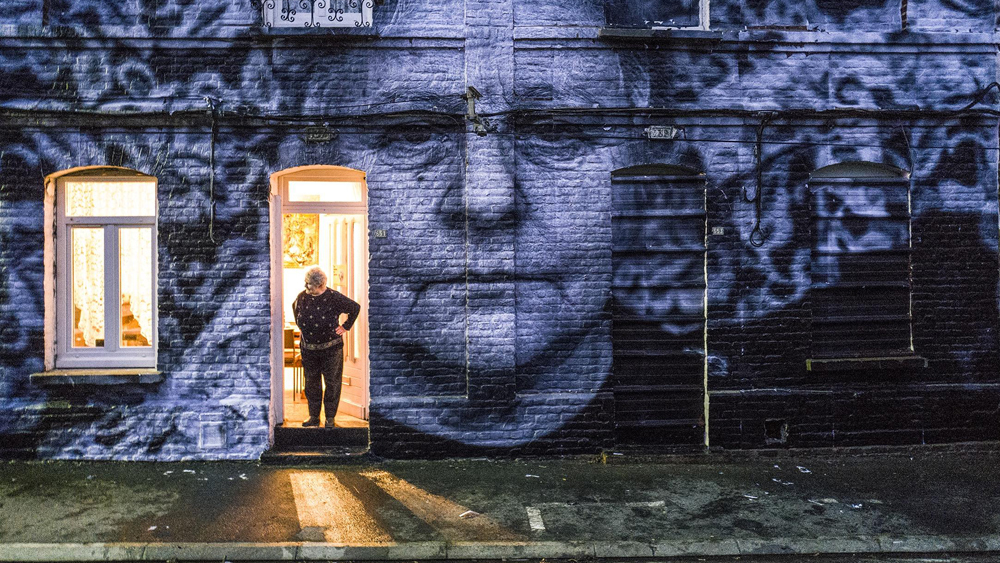A Pre-festival Double Feature: Agnès Varda and Public Art
Agnès Varda in her film Faces Places
On March 29, 2019 French New Wave director Agnès Varda died at the age of 90. She directed such works as Cleo from 5 to 7, Vagabond, and The Gleaners and I. I thought of her work often even before her death but I have thought about her even more in the time since. For me, cinema is the lens through which I filter life, and Varda’s work has been a rich source in shaping my understanding of the world around me.
I love Varda’s films because she is an acute cinematic investigator. She approaches the world with compassionate curiosity and is ready to turn every stone and exhaust every angle in the name of discovery. I thought of her again in the run-up to Up Here 5, remembering the two times she turned her camera on public art; in Mur Murs (1980) and Faces Places (2017).
“... In Los Angeles I mostly saw walls, graffiti covered walls as beautiful as paintings, signed by dozens of anonymous kilroys, walls as long as mythic serpents,” and so begins Mur Murs.
A still from Mur Murs
Mur Murs tasks itself with chronicling the murals of Los Angeles. The film posits that these murals are fascinating visual additions to the modern cityscape and represent untold histories and public exhibitions of art. They take the everyday dramas of the urban space and blow them up, allowing Los Angeles' citizens to see themselves in new ways.
In the film, one muralist remarks that she has never seen a Chicana woman’s portrait in a museum or a gallery. She says this as she stand before her work, a massive depiction of a Chicana woman. Murals in Mur Murs are a means for representation, personal expression, social commentary, iconicizing those left out of the traditional historical record, creating myth, and just plain-old beautifying buildings and cities.
“I remember images from your films. Cleo’s face. Mur Murs in Los Angeles. Those giant murals made such an impression on me,” says street artist and co-director JR to Agnès at the beginning of Faces Places.
JR’s artistic practice involves taking black and white photographs of people, printing the photographs at a large scale, and then plastering the photos on facades across France. As Varda’s artistic accomplice, JR’s work acts as a prompt for Varda to explore the stories of strangers. In a particularly touching scene we meet the last resident of a row of houses that once were occupied by miners and are soon to be condemned. We learn about her family’s history with the mine and soon enough JR has adhered images of miners on all the house fronts except hers, where he pastes an enlarged portrait of the woman herself.
A still from Faces Places
I’m always surprised by Varda’s technical and artistic choices as a filmmaker. Her editing and mis en scene are unconventional. She uses colour in strange ways. Her films also usually have an understated simplicity. And it works so well to bring us into Varda’s world—I’m better for having seen her work.
Her films are beautiful, and perhaps it’s because they convey a joie de vivre without ever ignoring undercurrents of sadness. Simply put, she never paints life as anything less than complicated, and there's beauty in that.
In Mur Murs and Faces Places, muralists are making the banal extraordinary in LA and across France—an analogue for Varda and her work.
Faces Places is available through iTunes and Mur Murs is available through The Criterion Collection on DVD and digitally through The Criterion Channel.
Encouraged reading:
https://musings.oscilloscope.net/post/184087275591/paris-sans-agnès-by-andrew-lapin
http://cleojournal.com/issue/vol-6-issue-1-varda/



